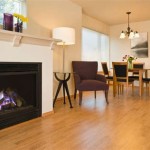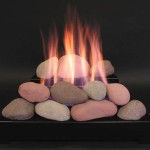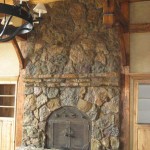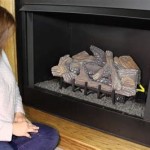Converting a Gas Fireplace to a Wood Burner: A Comprehensive Guide
The desire to convert a gas fireplace to a wood-burning one often stems from a longing for the authentic crackle and warmth of a natural fire, or perhaps a preference for a renewable fuel source. While seemingly straightforward, this conversion is a complex undertaking with significant safety and regulatory implications. It requires careful consideration of existing fireplace structure, venting systems, and local building codes. This article will outline the essential factors and steps involved in such a conversion, providing a detailed overview for those contemplating this project.
Before embarking on any physical alterations, it is paramount to thoroughly research local building codes and regulations. These vary significantly depending on location and can dictate aspects such as permissible fuel types, chimney requirements, and necessary permits. Failing to comply with these regulations can result in fines, forced removal of the installation, and potential legal issues. Contacting the local building department is the first and most crucial step in this process.
Assessing the Existing Fireplace Structure
The first step in determining the feasibility of converting a gas fireplace to wood-burning is a comprehensive assessment of the existing structure. Gas fireplaces are designed with different specifications than wood-burning fireplaces, and the structure may not be suitable for the higher temperatures and more demanding exhaust requirements of a wood fire. A critical element of this assessment is the firebox. Wood-burning fireplaces require a deeper firebox constructed of fire-resistant materials, such as firebrick, capable of withstanding extreme heat. Gas fireplaces often have shallower fireboxes and may lack the necessary insulation to prevent heat from transferring to surrounding combustible materials.
If the existing firebox is deemed inadequate, a complete rebuild may be necessary. This involves removing the existing firebox and constructing a new one from scratch, adhering to all relevant building codes and safety standards. This is a significant undertaking that requires specialized knowledge and skills, making it advisable to engage a qualified mason or contractor.
Another important aspect to consider is the fireplace surround and hearth. These elements must also be constructed of non-combustible materials and adequately sized to protect the surrounding floor and walls from sparks and embers. Replacing or modifying these features may also be necessary to meet the safety requirements for a wood-burning fireplace.
Evaluating and Modifying the Venting System
The venting system is arguably the most critical component to consider during a gas-to-wood fireplace conversion. Gas fireplaces typically utilize smaller diameter vents, often B-vent or direct vent systems, which are not designed to handle the high temperatures, corrosive byproducts, and larger volumes of smoke produced by a wood fire. Using an existing gas vent for wood burning is extremely dangerous and can lead to carbon monoxide poisoning, house fires, and other serious hazards.
Wood-burning fireplaces require a properly sized masonry chimney or a listed factory-built chimney designed specifically for wood-burning appliances. The chimney must extend above the roofline by a specific height, as dictated by local building codes, to ensure proper draft and prevent downdrafts. The chimney liner, which is the interior lining of the chimney, is equally important. A properly installed liner, typically made of clay tile, stainless steel, or cast-in-place concrete, protects the chimney structure from the corrosive effects of flue gases and provides a smooth surface for efficient venting.
If the existing venting system is not compatible with wood burning, a new chimney will need to be installed. This can be a complex and costly undertaking, requiring structural modifications to the house and careful planning to ensure proper draft and safety. It is essential to consult with a qualified chimney professional to determine the appropriate chimney size and design for the fireplace and to ensure that the installation meets all applicable codes and standards.
Addressing Permits and Inspections
As previously mentioned, obtaining the necessary permits is a non-negotiable aspect of this conversion process. Permits ensure that the proposed modifications meet local building codes and safety regulations. The permit application will typically require detailed plans of the proposed work, including specifications for the firebox, venting system, and surrounding structure. The local building department will review these plans and may require revisions to ensure compliance.
Once the permit is approved, inspections will be conducted at various stages of the project to verify that the work is being performed according to the approved plans and code requirements. These inspections may include a pre-construction inspection, a framing inspection (if applicable), and a final inspection upon completion of the project. The inspector will check for compliance with all relevant codes, including fire safety regulations, chimney height requirements, and clearances to combustible materials.
Failing to obtain the necessary permits and inspections can have serious consequences. The local building department may issue a stop-work order, requiring the project to be halted until the required permits are obtained. In addition, the homeowner may be subject to fines and penalties. Furthermore, any insurance claims related to a fire or other incident caused by an unpermitted and non-compliant installation may be denied, leaving the homeowner financially liable for the damages.
In summary, converting a gas fireplace to a wood-burning one is a project that demands meticulous planning, thorough research, and strict adherence to safety regulations and local building codes. It is crucial to consult with qualified professionals, including masons, chimney specialists, and building inspectors, to ensure that the conversion is performed safely and correctly. A successful conversion will provide the ambiance of a wood-burning fire while maintaining a safe and code-compliant home environment.

Gas To Wood Fireplace Conversion Overland Park Ks Firplace Service

Want To Convert Gas Wood Fireplace Full Service Chimney

Can You Convert A Gas Fireplace To Wood Burning Stove Direct Stoves

Wood Burner Conversion New Jersey Fireplaces Kjb

Want To Convert Gas Wood Fireplace Full Service Chimney

Converting A Fireplace To Wood Burning Stove Chesneys

Convert Gas Fireplace To Wood

Converting A Fireplace To Wood Burning Stove Chesneys

Converting Your Fireplace Gas Or Wood Amarillo Tx West

Wood To Gas Fireplace Conversion In Wisconsin Free Quote Badgerland Waesha








